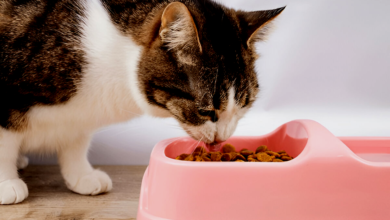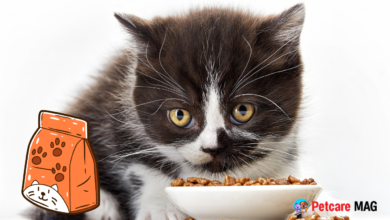
Separation anxiety in pets is a growing concern for UK pet owners, particularly as lifestyles shift post-pandemic. Characterised by distress when left alone, this condition can lead to destructive behaviour, excessive vocalisation, and even health issues. With over 12 million UK households owning pets, understanding and preventing separation anxiety is critical to ensuring animal welfare and fostering harmonious human-pet relationships. This article draws on insights from UK veterinarians, animal behaviourists, and trainers to provide actionable strategies for preventing this distressing condition.
The emotional bond between pets and their owners is undeniable, but it can sometimes lead to over-dependency, making pets vulnerable to anxiety when left alone. Separation anxiety not only affects the well-being of the animal but also creates stress for owners who worry about their pet’s safety and happiness. By addressing the root causes and implementing preventative measures, pet owners can help their furry companions feel more secure and confident, even in their absence. This guide offers expert advice tailored to the unique needs of UK pet owners, ensuring that pets and their families can thrive together
Recognising the Signs of Separation Anxiety
Recognising the signs of separation anxiety in pets is the first step toward addressing this distressing condition. Pets, particularly dogs and cats, exhibit a range of behaviours when they feel anxious or stressed about being left alone. These behaviours can vary in intensity, but they often follow a consistent pattern. Common signs include destructive behaviour, such as chewing furniture, scratching doors, or shredding household items. This is often a pet’s way of coping with their anxiety, as the physical act of destruction can temporarily relieve stress.
Another telltale sign is excessive vocalisation, such as persistent barking, whining, or meowing. This vocal behaviour is a cry for attention and reassurance, as pets attempt to communicate their distress. In some cases, pets may also exhibit house soiling, even if they are otherwise well-trained. Accidents indoors, particularly near exits or windows, can indicate that a pet is panicking about being left alone.
Pacing or restlessness is another common symptom. Anxious pets may walk in circles, repeatedly move from room to room, or appear unable to settle. This behaviour reflects their inner turmoil and inability to relax without their owner’s presence. In severe cases, pets may attempt to escape by scratching at doors, windows, or gates, which can lead to injuries or property damage.
It’s important to note that these behaviours are not acts of defiance or disobedience but rather manifestations of panic and fear. UK veterinarian Dr. Sarah Jennings explains, “Owners often misinterpret these signs as bad behaviour, but they are clear indicators of emotional distress. Understanding this distinction is crucial for providing the right support.” Monitoring pets through cameras or asking neighbours to observe their behaviour can help owners identify these signs early and take appropriate action.
By recognising these symptoms, pet owners can intervene before the anxiety escalates, ensuring their pets feel safe and secure even when left alone. Early detection and understanding are key to preventing long-term emotional and behavioural issues in pets.
Expert Strategies for Prevention
1. Gradual Desensitisation to Alone Time
Start by leaving pets alone for short periods and gradually increase duration. For example, begin with 5-minute absences and build to several hours. Pair departures with positive associations, such as offering a treat-filled puzzle toy. Animal trainer Mark Roberts advises, “Never make arrivals or departures emotional. Calm indifference reduces dependency.”
2. Create a Safe, Enriched Environment
Designate a “safe zone” with familiar items like blankets, toys, and clothing carrying the owner’s scent. Environmental enrichment—such as interactive feeders, scratching posts, or bird perches—distracts pets from loneliness. A 2022 UK study found that cats exposed to puzzle feeders showed 40% fewer anxiety behaviours.
3. Establish a Consistent Routine
Pets thrive on predictability. Feed, walk, and play with them at fixed times to minimise uncertainty. For working owners, staggered departures (e.g., leaving 10 minutes earlier each day) prevent association of specific actions (like picking up keys) with anxiety.
4. Avoid Over-Attachment
Encourage independence by ignoring attention-seeking behaviour and rewarding calmness. Behaviourist Lucy Harper suggests, “Teach pets to enjoy their own company. For dogs, practice ‘stay’ commands while moving out of sight indoors.”
5. Consider Professional Support
For high-risk cases, consult a vet or certified behaviourist. Medications like pheromone diffusers (Adaptil for dogs, Feliway for cats) or anti-anxiety supplements may be recommended. In severe cases, cognitive behavioural therapy (CBT) sessions for pets can reshape negative associations with solitude.
The Role of Exercise and Mental Stimulation
Physical and mental exhaustion reduces anxiety. Dogs require daily walks tailored to their breed—e.g., 60 minutes for Labradors versus 30 for Bulldogs. Mental challenges, like scent games or obedience training, also tire pets. Cat behaviourist Dr. Fiona Quinn emphasises, “A bored cat is an anxious cat. Rotate toys weekly to maintain novelty.”
Case Study: Luna the Labrador
Luna, a 3-year-old Labrador from Manchester, developed severe anxiety after her owner returned to office work. She destroyed furniture and barked incessantly. With guidance from a behaviourist, her owner implemented gradual desensitisation, introduced a peanut butter-filled Kong, and established a rigid routine. Within 8 weeks, Luna’s anxiety reduced by 70%.
Common Mistakes to Avoid
- Punishing anxiety-driven behaviour: This exacerbates fear.
- Overly emotional reunions: Reinforces dependency.
- Inconsistency: Skipping training days undermines progress.
- Ignoring early signs: Early intervention prevents escalation.
Read More: Heatwaves & Pets: Keeping Your Furry Friend Cool in Summer
Conclusion
Preventing separation anxiety in pets is a journey that requires patience, consistency, and empathy. By understanding the emotional needs of our furry companions and implementing evidence-based strategies, pet owners can foster resilience and independence in their animals. Whether through gradual desensitisation, creating a safe and enriched environment, or seeking professional support, the efforts invested in prevention yield lifelong benefits for both pets and their owners. As the bond between humans and pets continues to grow stronger, prioritising their mental health ensures happier, healthier, and more confident companions.
Ultimately, a secure pet is a confident pet, capable of thriving even in solitude. By taking proactive steps to address separation anxiety, UK pet owners can create a harmonious living environment where their pets feel safe and content. Remember, small changes in routine and behaviour can make a significant difference in your pet’s well-being. With the right approach, separation anxiety can be managed effectively, allowing pets and their owners to enjoy a balanced and fulfilling relationship.
FAQs
Q: Can separation anxiety be cured completely?
A: While some pets may always need support, most show significant improvement with consistent training and environmental adjustments.
Q: How long does desensitisation training take?
A: Progress varies, but visible results often appear within 4–8 weeks. Severe cases may require months.
Q: Are certain breeds more prone to separation anxiety?
A: Yes—breeds like German Shepherds, Bichon Frises, and Siamese cats are genetically predisposed.
Q: Is crating effective for anxious dogs?
A: If introduced positively, crates provide security. However, forced confinement can worsen anxiety.
Q: Can cats suffer from separation anxiety?
A: Absolutely. Signs include overgrooming, refusal to eat, or litter box avoidance when alone.







